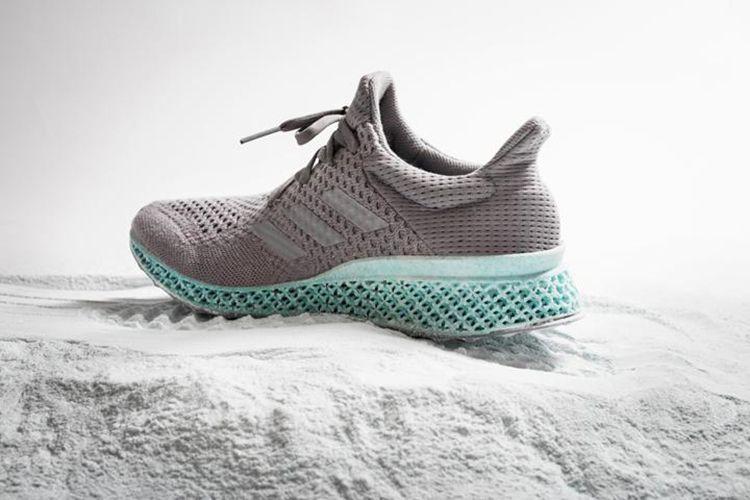Plastic pollution is one of the most pressing environmental challenges of our time, with millions of tons of waste ending up in our oceans each year. Yet, amidst this daunting reality, innovators around the globe are transforming this pollution into chance. Welcome too the world of ocean plastic products—a burgeoning industry that seeks to turn the tide on waste by repurposing the very material that threatens marine ecosystems into everyday goods. From stylish accessories to functional household items, these products not only highlight the ingenuity of human creativity but also emphasize the importance of sustainable practices in our modern lives. In this article, we will delve into the interesting journey of ocean plastic—from the depths of the sea to the shelves of our favorite stores—and explore how this movement is reshaping our perceptions of waste and sustainability. Join us as we uncover the stories behind these products and the positive impacts they are making for our oceans and our planet.
Innovative Materials: The Science Behind Ocean Plastic Products
In recent years, the transformation of ocean plastic waste into functional products has ignited a wave of innovation within the material science community. Advanced techniques such as mechanical recycling, chemical recycling, and biodegradable alternatives have emerged, enabling manufacturers to repurpose discarded plastics into high-quality materials. These methodologies not only help mitigate the environmental impact of plastic pollution but also pave the way for a new category of sustainable goods. The journey from ocean debris to finished products frequently enough involves:
- Collection of waste from beaches and ocean cleanup efforts
- Sorting and cleaning to ensure material purity
- Processing to transform raw plastic into reusable forms
- Manufacturing into everyday items like bags, clothing, and furniture
At the heart of these innovative materials is a commitment to sustainability, incorporating features that enhance performance while maintaining ecological obligation.For example, some products are designed to be durable and lightweight, which reduces transport emissions, while others incorporate bio-based additives that further diminish the carbon footprint. Below is a table showcasing some popular ocean plastic products and their characteristics:
| Product | Material Used | Benefits |
|---|---|---|
| Reusable Bags | Recycled Polyethylene | Strength and longevity, reduces single-use plastics |
| Clothing | Recycled PET | Fashionable and eco-friendly, resource-efficient production |
| Outdoor Furniture | Composite Material | Weather-resistant, low maintenance, and recyclable |

sustainable Practices: How Brands Are reducing Environmental Impact
Innovative brands are making remarkable strides in mitigating their environmental footprint by transforming discarded plastics from our oceans into functional everyday products. By leveraging advanced recycling technologies and creative design, these companies are not only addressing pollution but also promoting a circular economy. This approach not only conserves resources but also raises awareness about the importance of ocean conservation. Some key practices include:
- Using Recycled materials: Brands are incorporating ocean plastics into diverse products,from fashion items to household goods.
- Collaborative Efforts: Partnerships with environmental organizations aid in sourcing materials and enhance brand credibility.
- Transparent Supply Chains: Providing customers insights into the production process fosters trust and encourages eco-conscious consumerism.
To illustrate the impact of these sustainable practices, consider the following data on popular ocean plastic products:
| Product Type | Percentage of Ocean Plastic | Brands Leading the Way |
|---|---|---|
| Footwear | 50% | Adidas, Allbirds |
| Outdoor Gear | 40% | Nemo Equipment, Patagonia |
| Household Items | 30% | Grove Collaborative, Method |

Consumer Choices: Supporting Ethical and eco-Friendly Products
As consumers become increasingly aware of the impact their choices have on the environment, there’s a growing demand for products that reflect sustainability and ethical sourcing. Ocean plastic products are leading the charge in this movement, transforming pollution into innovation. Companies harnessing this approach sift through the debris of our oceans,cleaning up the ecosystem while creating functional everyday items. By choosing these products, consumers not only support responsible production but also participate in a broader mission to restore ocean habitats and wildlife. Some examples of these innovative products include:
- Reusable bags made from recycled ocean plastics
- Water bottles crafted from marine waste
- Fashion accessories sourced from reclaimed fishing nets
In addition to fostering a cleaner planet, opting for products made from ocean plastic can evoke a sense of identity among consumers. Every time they choose a sustainable item, they contribute to a cycle of environmental restoration.To better illustrate the impact, consider the following table that summarizes some key benefits of supporting ocean plastic products:
| Benefit | Description |
|---|---|
| Reduces Waste | Helps decrease marine pollution by repurposing discarded materials. |
| Supports Local Economies | Encourages job creation in coastal communities focused on cleanup and manufacturing. |
| Promotes Awareness | Raises consciousness about marine conservation and sustainability efforts. |

Future Outlook: Advancements in Ocean Plastic Technology and Recycling Efforts
As we look ahead, innovations in ocean plastic technology promise a revolution in both the recycling process and the products derived from ocean waste. Researchers and entrepreneurs are exploring advanced biodegradable materials that not only provide sustainable alternatives to customary plastics but also enhance the quality and longevity of ocean plastic products. Cutting-edge methods, such as enhanced sorting technologies and enzyme-based recycling, are making it easier to isolate and repurpose plastic waste, which opens new avenues for creating consumer items from materials previously considered non-recyclable. These developments not only aim to reduce the accumulation of waste but also to restore marine ecosystems by transforming discarded plastics into valuable resources.
Additionally, collaborative global efforts are fostering a circular economy model, wherein ocean plastics are kept in use longer, reducing the need for new materials. Companies are increasingly adopting closed-loop systems, and governments are incentivizing stringent waste management policies while encouraging innovation in sustainable production techniques. Educational programs and awareness campaigns are also on the rise, empowering consumers to make informed choices regarding products made from recycled ocean plastics. The following table highlights some of the key advancements in ocean plastic technology:
| innovation | Description | Impact |
|---|---|---|
| Microfiber Filtration | Technologies designed to capture microfibers during washing. | Reduces ocean pollution from textiles. |
| 3D Printing | Utilizing ocean plastics to create new products on demand. | Encourages local manufacturing and reduces waste. |
| Innovative Recycling Techniques | Using chemical methods to break down plastics into reusable materials. | Increases recycling rates and reduces landfill contribution. |
Insights and Conclusions
as we navigate the delicate balance between consumption and sustainability, the rise of ocean plastic products offers a glimmer of hope. These innovative items, born from the very waste that threatens our oceans, remind us that even in the face of overwhelming challenges, creativity and resilience can lead to transformative solutions. By repurposing what once polluted our seas into everyday goods, we not only give new life to discarded materials but also cultivate a deeper awareness of our environmental footprint.
As consumers,we hold the power to support this change by choosing products that reflect our commitment to sustainability. In the intricate dance between necessity and responsibility, ocean plastic products symbolize our shared journey toward a cleaner, more sustainable future. Each purchase is a ripple in the tide of change, reminding us that our small choices can lead to notable impacts. So, as we reflect on the journey from waste to wonder, let us embrace the possibilities that lie in our hands and continue to advocate for solutions that protect our planet. Together, we can turn the tide against ocean pollution and create a world where everyday goods harmoniously coexist with environmental stewardship.




